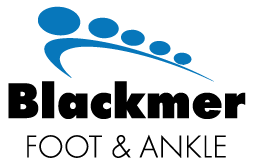CET Treatment
(Combination Electroanalgesia Therapy)
Our treatment protocol consists of three interrelated programs: Diagnostic, The CET Treatment and Ongoing Support.
Diagnosis
First of all, it is very important to determine if your symptoms are a result of Peripheral Neuropathy (PN), a structural issue with your foot or a combination of both. Dr. David A. Blackmer, a foot and ankle specialist with over 27 years of experience can effectively determine if you will benefit from CET, podiatric care or both. PN requires a comprehensive diagnostic protocol as the symptoms are so multi-faceted. Dr. David A. Blackmer will review a patient's current symptoms, family medical history and other factors.
The doctor may also perform tests to determine the cause and the severity of the patient's nerve damage.
Examples may include:
- Tests of muscle strength, as well as evidence of cramps. Evaluation of a patient's ability to register vibration, touch, and pain.
- Blood tests for diabetes, liver/kidney dysfunction, vitamin deficiencies and other metabolic disorders.
- Additional testing as may be recommended from time to time to further assess nerve damage, including:
- Nerve Conduction Velocity (NCV) tests to measure the degree of damage in larger nerves
- Electromyography (EMG) involves evaluating a muscle to compare the amount of electrical activity present when muscles are at rest vs. when they contract. EMG tests can help differentiate between muscle and nerve disorders.
- Epidermal Nerve Fiber Density Test which is a simple lower leg skin biopsy that will detect small nerve fiber neuropathy. A Nerve Biopsy may be performed which involves examining a very small sample of nerve tissue, from the foot or lower leg.
- Ultrasound screening for peripheral vascular disease
- Radiographic imaging to rule out traumatic or arthritic causes of Peripheral Neuropathy
All results are worked into an overall diagnostic profile that you and your physician will carefully review before moving into the treatment phase.
What is CET?
CET is combination protocol of Electronic Signal Treatment (EST) and Integrated Nerve Blocks (INB) performed at the same setting.
After confirming the diagnosis of PN and depending upon the severity of symptoms, the patient will typically need to undergo 14-20 treatments. Unlike other treatments, which focus on oral medications or surgery, the CET focuses on the underlying cause of peripheral neuropathy by stimulating nerve regrowth to reduce and in some cases eliminate the neuropathy symptoms entirely.
Electronic Signal Treatment (EST): Is performed with a patented and FDA cleared electromedical device that has been specifically developed for the treatment of neuropathy.
The device was developed to enhance the stimulating lower frequencies and non-stimulating middle frequencies. This voltage-gate channel manipulation device also combines, and simultaneously delivers frequency-modulated (FM) and amplitude-modulated (AM) electric cell currents in the middle frequency range resulting in sustained nerve depolarization.
In some ways, these devices have a close relationship to surgically implanted electronic stimulators. The critical difference is a bio-similar rapid rise-slow decay waveform coupled to higher sweeping frequencies which successfully produces the nerve depolarization with voltage-gated channels open and in turn successfully delivers therapeutic energy trans-cutaneous to all the nerve fibers without patient discomfort or any undesired side effects. The EST produces and delivers electronic biologically effective signals that can be used to help heal and restore the nerves that carry the pain signals and the muscles and other tissues which are often the source of the pain signals. Specific electronic parameters are employed to influence the more conductive target tissue at the cellular level.
Integrated Nerve Blocks (INB): In conjunction with EST, these offer the additional benefit of accelerating the quality and speed of symptom reduction. INB involves the utilization of standard interventional pain management peripheral nerve blocks. The interaction of the electronic signaling enhances the local anesthetic chemical block. The block is performed with a small amount of local anesthetic to improve blood flow to the affected areas and nerve along with initiation of chemically induced hyper-polarization.
Is it hypothesized that the conflicting mechanisms of action between the EST and IBN produce a synergistic effect resulting in prolonged reduction or elimination of neuropathy symptoms.
Post Treatment Support
The clinic also offers its patients a wide variety of post-treatment support referrals:
- Supplemental treatment with multivitamins shown to affect neuronal cell turnover and on-going nerve regeneration (B-complexes, Folic Acid, Vitamin C & Vitamin D, and Alpha Lipoic Acid)
- Appropriate patient based Physical therapy through neuro-muscular re-education, therapeutic exercises, or manual therapy techniques.
- Supplemental treatment through appropriate Durable Medical Equipment (DME), safe and efficacious topical medications, and long term home health care, and stretching exercises if medically necessary
